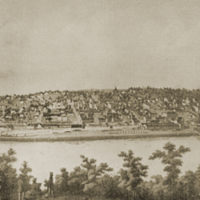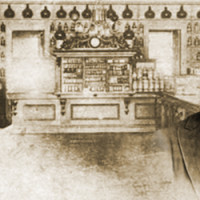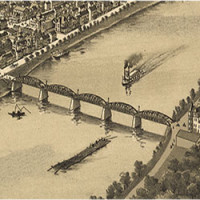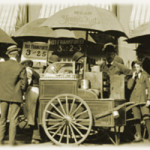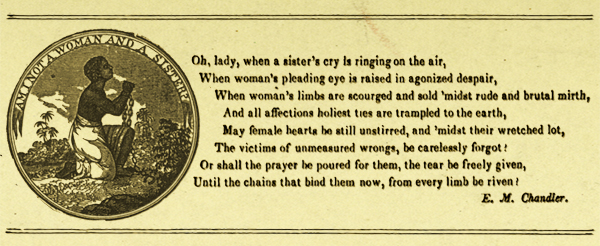
History clearly records that the 1860 Presidential Race was a pivotal moment for the future of the United States. The movement for the abolition of slavery was not a quick phenomena, but rather one which took decades to rise to the top of the nation’s consciousness.
Decades earlier the movement gained traction in the U.K. Beginning as early as 1783, the anti-slaverymovement firmly entrenched itself. The movement’s goal was the complete abolition of slavery throughout the country, its territories, and its colonies. The British public could no longer stomach the institution, and Parliament passed landmark laws over the ensuing decades which ultimately outlawed the inhumane institution.
Early Tokens — 1790s
It was this era that tokens began to express such public sentiments. Many were minted on privately struck coppers that found themselves circulating not only throughout the British Empire, but also in territories like Canada and its former colonies like the United States.
With such widespread circulation, public consciousness — and moral disgust — regarding the institution spread.

Decades prior to the outcome of the Civil War, the U.S. public too began struggling with the inhumanities of slavery. Northern states outlawed the institution, and Federal Acts such as the Missouri Compromise were passed.
The Hard Times Era — 1830s
Nearly two decades later, during the Hard Times era, tokens expressing pro-Abolition sentiments began to appear. Most widely known are the ones produced by the American Anti-Slavery Society.
Commissioned to engravers Gibbs Gardner & Co., the firm was contracted in late 1837 to strike varieties of a kneeling female piece, with the motto “Am I Not A Woman.”
Advertisements for the token began to appear in The Emancipator, a weekly newspaper founded in May of 1837. The first ad appeared on November 23, 1837. Quantities of 100 were offered at a price of one dollar.

Quickly after the November ad ran, the director of the United States Mint acted to quash circulation of the tokens. He cited their resemblance to official U.S. large cents as the reason. However, its entirely plausible that the token’s Abolitionist theme was more of a motivating factor, rather than its appearance. By late December of that same year, advertisements for the tokens ceased.
Pattern pieces with a man also were struck, but never put into circulation.
The Merchant Era — 1840s
Meanwhile, in southern cities like Alexandria Virginia and South Carolina’s Charleston, the slave trade continued to flourish. Auctioneers and agents continued the practice of selling human beings, and weren’t bashful about advertising that fact.
Many Americans held strong religious convictions against the institution. More determined individuals, like John Brown and his sons, held even stronger convictions against slavery — convictions which they believed could only be addressed through rebellion, insurrection, and violence.
The Majority Turns Against Slavery — 1850s
Such anti-slavery beliefs were fervent, and led to bloody altercations beginning in the 1840s, including the many raids and skirmishes related to the Kansas-Missouri Wars.
In the 1850s violence and bloodshed neared a climax, when Brown launched a raid at the Harper’s Ferry armory in Virginia.
With the news of Brown’s raid, the public’s disgust with slavery had gained pivotal velocity. The Abolition Movement had spread from the nation’s outlying territories and individual states, and vaulted to the national level.
The 1860 Presidential Race
Political candidates of the era often leveraged emerging inventions as they became available. Lincoln and Douglas were no different. By the time that Brown had conducted his raid at Harper’s Ferry, the nation had become galvanized, and was divided into two factions.
One faction included Abraham Lincoln, and the newly emerging Republican Party. This faction was pro-Abolition and sought the complete and absolute eradication of slavery.
Private organizations like the Wide-Awakes were also organized, with semi-autonomous chapters founded to support Lincoln and the Republican Anti-Slavery movement.
Meanwhile Stephen A. Douglas, and the Democrat Party, fought to keep the institution of slavery. The Democrat Party platform was one which did not support the eradication of slavery, but rather argued the practice was more about economics and states’ rights.
By 1860 ferrotypes had become inexpensive enough that they could be mass produced and disseminated, without egregious cost. Both candidates (as well as others) thus had tokens issued that featured their own photographs alongside political slogans.
The first specimen is a Stephen Douglas and his running mate Herschel V. Johnson. Listed as Dewitt/Sullivan SD-1860-37, the specimen is Extra Fine in grade.
The second is Abraham Lincoln and his running mate. Listed as AL-1860-106, the specimen likewise is also in EF grade.
The United States Civil War
After Lincoln won the Presidency, the issue of slavery quickly escalated to a climax. And when the nation finally did implode upon itself, citizens took arms against their own fellow citizens, and further exacerbated the long-standing divisions and resentments between one another. Many southern states seceded, the Civil War ensued, and the nation was thrust into a war with itself.

Slavery Abolished
In the end, of course, the Union was victorious over the Southern States. With the issuance of the Emancipation Proclamation, the end of slavery neared.
The ratification of the 13th, 14th, and 15th Amendments freed those who had been enslaved, granted all U.S. citizenship, and gave all men, regardless of “race, color, or previous condition of servitude” the right to vote.
Aaron Packard ![]()
Notes and Sources
- Standard Catalog of United States Tokens 1700-1900 Fourth Edition, Russell Rulau, Krause Publications, ©2004
- A Guide Book of United States Tokens and Medals, Katherine Jaeger, Whitman Publishing, ©2008
- Slavery Illustrated in Its Effects Upon Woman and Domestic Society, George Bourne, Isaac Knapp Publisher, 1837
- Correspondence with Tony Chibbaro, South Carolina Numismatist and Historian
- Correspondence with Steve Hayden, South Carolina Numismatist
- ‘The Tokens of W.W. Wilbur of Charleston S.C.,’ Tony Chibbaro, South Carolina Numismatist and Historian
- The Charleston Mercury Newspaper Archives
- The Emancipator newspaper, ‘Medals,’ November 23, 1837, pg.117
- The Library of Congress Digital Archives
- New York’s Crystal Palace & The H.B. West Tokens - November 6, 2019
- Edward Aschermann’s Cigar & Tobacco Tokens - November 2, 2019
- George T. Hussey & His Special Message Tokens - October 30, 2019













